High-Intensity Focused Ultrasound (HIFU) in Casablanca
Search and Compare the Best Clinics and Doctors at the Lowest Prices for High-Intensity Focused Ultrasound (HIFU) in Casablanca
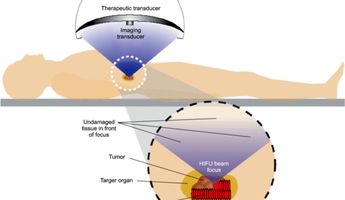
Find the best clinics for High-Intensity Focused Ultrasound (HIFU) in Casablanca
No pricing info available
Indonesia offers the best prices Worldwide
Price: $ 56
From 23 verified reviews
Zineb Solaihi, 22 November 2019
Clean clinic very lovely staff
Compare Before & After Photos of _procedure_photos.phpHigh-Intensity Focused Ultrasound (HIFU)
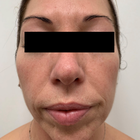
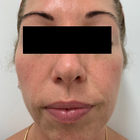
Front view

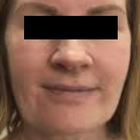
Front view


Front view
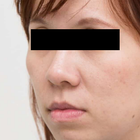
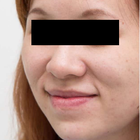
Front view
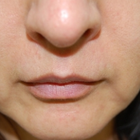
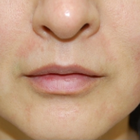
Front view
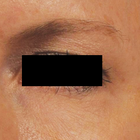
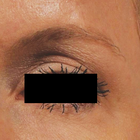
Front view
WHY US?
At Medijump, we're making medical easy. You can search, compare, discuss, and book your medical all in one place. We open the door to the best medical providers worldwide, saving you time and energy along the way, and it's all for FREE, no hidden fees, and no price markups guaranteed. So what are you waiting for?

Free

Best Price

Widest Selection

Risk-Free
What you need to know about High-Intensity Focused Ultrasound (HIFU) in Casablanca
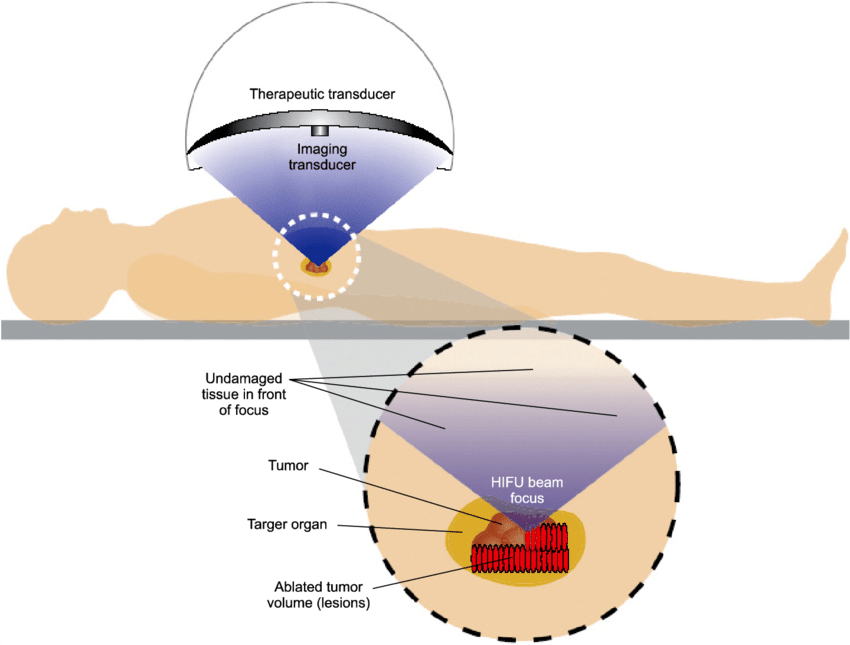
High intensity focussed ultrasound technique (HIFU) also known as focussed ultrasound surgery (FUS), uses non-ionizing ultrasound waves to heat up your body tissues. Temperature can be increased up to 70 to 90°C. These sound waves do not pass through air and bone. It is used for multi-purposes. It works to increase your blood, and lymph flow stimulates cell division and destroys tumor cells. It can also be used to treat a number of disorders including various types of cancer and uterine fibroids. Its use in the treatment of prostate cancer is gaining fame. It can also be used for cosmetic reasons, to reduce wrinkles, aging lines and to lift your loose skin. It is found to be most effective on jawline and cheeks. It should always be performed by the experts because the sonication of the wrong tissue can be dangerous. Also, there might be incomplete destruction of the tumor. Some areas of your body can not be sonicated as they are sensitive to sound waves, this should also be kept in mind while performing HIFU. It can only be used to treat localized cancer and tumors. Cancer which has spread cannot be cured through HIFU.
As HIFU is involved in the treatment of a number of diseases, before going through it, you may suffer from those diseases. These disorders include ovarian fibroids, different types of cancers, breast tumors, Parkinsonism, and a number of other neurological disabilities. You might have loose skin of face, neck, and chest. Vaginal laxity is also a problem. After HIFU, your tumors are destroyed, cancer cells are killed and diseases are cured. Your loose skin looks tightened and strengthened. Wrinkles and aging lines are gone. Vaginal and skin laxity are removed. You look younger than your actual age.
What does a High-Intensity Focused Ultrasound (HIFU) Procedure Involve?
The procedure begins with cleaning the area to be sonicated with alcohol swabs so that there are no germs and bacteria. In the next step, a gel is applied to your skin. Magnetic resonance imaging (MRI) or ultrasound is used to focus the exact tissue, organ or tumor that needs to be treated. The individual is sedated to avoid discomfort and pain during the procedure. After this, the procedure differs according to the purpose of HIFU. In general, an acoustic lens is used to focus sound waves on the targeted organ. The transducer device is used to emit sound waves. The sound waves propagate through the various layers of skin to reach the tumor to be destructed. When sound waves reach the tumor, heat is produced there increasing the temperature up to 90°C in 20 seconds only. This heat starts destroying the cancer cells there.
How Long Should I Stay in Casablanca for a High-Intensity Focused Ultrasound (HIFU) Procedure?
It is a 1 to 4 hours procedure. It depends upon the purpose for which HIFU is being performed. Generally, it is an outpatient procedure. You can be discharged from the hospital after the effects of the sedatives subside. You should plan to stay in Casablanca for at least 14 days after your Procedure, this will allow for the initial recovery and follow-up check-ups, etc.
What's the Recovery Time for High-Intensity Focused Ultrasound (HIFU) Procedures in Casablanca?
The recovery time differs and depends upon the purpose for which HIFU is being carried out. You may suffer from pain and discomfort for 3 to 4 days after the procedure. The soreness and swelling will subside in 2 to 3 weeks. It has less recovery time and has less invasive techniques approved by the FDA. The Non-ionizing radiations used in this technique are the least damaging.
What sort of Aftercare is Required for High-Intensity Focused Ultrasound (HIFU) Procedures in Casablanca?
Aftercare differs in accordance with the purpose for which HIFU is done. However, the following points should be kept in mind to look after yourself at home after being discharged:
- Visit your doctor on a regular basis.
- Do not drive home if you are still under the influence of sedatives.
- Eat healthily. Follow a diet plan made by an expert. It can help you recover faster.
- Take your medicines as and when prescribed by the doctor.
- Take a rest and give yourself time to recover.
- In the case of HIFU for cosmetic reasons, avoid contact with sunlight and wear sunscreen while going out.
- Do not rub or massage your skin.
- Look for something wrong. If you find any sign, visit your doctor immediately.
- In case of any discomfort, contact your physician. Do not go for self-medication.
What's the Success Rate of High-Intensity Focused Ultrasound (HIFU) Procedures in Casablanca?
HIFU has been found to be very successful in the treatment of most of the disorders. However, the success rate differs for each purpose. According to a study, the overall success rate for prostate cancer treatment was reported to be 84%. Cancer patients were divided into 3 groups. The high-risk group showed a low success rate. The intermediate group showed a higher success rate reaching 83.4% and the low-risk group showed the highest success rate of 94.2%. It is also found to be very effective and successful in treating skin laxity and uterine fibroids.
Are there Alternatives to High-Intensity Focused Ultrasound (HIFU) Procedures in Casablanca?
In actuality, HIFU itself is a non-surgical alternative to most of the surgeries. However, the following are some useful alternatives to HIFU:
- Dermal fillers: it is an alternative of HIFU for a facelift. Injections containing Botox, Restylane, etc. are given into your skin to make it look lifted and plump. Your skin looks wrinkle-free and you look younger than your age.
- Uterine artery embolization: this is a treatment for uterine fibroids. Arteries supplying the uterus are occluded by injecting an embolic agent into it. This cuts off blood supply to the fibroids causing them to shrink and ultimately die.
- Radical prostatectomy: also known as an open prostatectomy, entire prostate and seminal vesicle along with some lymph nodes in the pelvic area is surgically removed. Nerve damage is avoided to ensure erection and active sexual life afterward.
- Bilateral orchiectomy: in this surgery, both the testicles are surgically removed. This helps in treating prostate cancer.
- Brachytherapy: in this therapy, radioactive substances are directly inserted into the prostate gland. These are called seeds which give off radiations around the area where they were placed.
Whilst the information presented here has been accurately sourced and verified by a medical professional for its accuracy, it is still advised to consult with your doctor before pursuing a medical treatment at one of the listed medical providers
No Time?
Tell us what you're looking for and we'll reachout to the top clinics all at once
Enquire Now

Popular Procedures in Casablanca
Prices Start From $979

Prices Start From $714

Prices Start From $16

Prices Start From $28

Prices Start From $53

Recommended Medical Centers in Casablanca for High-Intensity Focused Ultrasound (HIFU)

- Interpreter services
- Translation service
- Religious facilities
- Medical records transfer
- Medical travel insurance
- Health insurance coordination
- TV in the room
- Safe in the room
- Phone in the room
- Private rooms for patients available

- Interpreter services
- Translation service
- Religious facilities
- Medical records transfer
- Medical travel insurance
- Health insurance coordination
- TV in the room
- Safe in the room
- Phone in the room
- Private rooms for patients available

- Interpreter services
- Translation service
- Religious facilities
- Medical records transfer
- Medical travel insurance
- Health insurance coordination
- TV in the room
- Safe in the room
- Phone in the room
- Private rooms for patients available

- Interpreter services
- Translation service
- Religious facilities
- Medical records transfer
- Medical travel insurance
- Health insurance coordination
- TV in the room
- Safe in the room
- Phone in the room
- Private rooms for patients available

- Interpreter services
- Translation service
- Religious facilities
- Medical records transfer
- Medical travel insurance
- Health insurance coordination
- TV in the room
- Safe in the room
- Phone in the room
- Private rooms for patients available

- Interpreter services
- Translation service
- Religious facilities
- Medical records transfer
- Medical travel insurance
- Health insurance coordination
- TV in the room
- Safe in the room
- Phone in the room
- Private rooms for patients available

- Interpreter services
- Translation service
- Religious facilities
- Medical records transfer
- Medical travel insurance
- Health insurance coordination
- TV in the room
- Safe in the room
- Phone in the room
- Private rooms for patients available

- Interpreter services
- Translation service
- Religious facilities
- Medical records transfer
- Medical travel insurance
- Health insurance coordination
- TV in the room
- Safe in the room
- Phone in the room
- Private rooms for patients available

- Interpreter services
- Translation service
- Religious facilities
- Medical records transfer
- Medical travel insurance
- Health insurance coordination
- TV in the room
- Safe in the room
- Phone in the room
- Private rooms for patients available

- Interpreter services
- Translation service
- Religious facilities
- Medical records transfer
- Medical travel insurance
- Health insurance coordination
- TV in the room
- Safe in the room
- Phone in the room
- Private rooms for patients available
High-Intensity Focused Ultrasound (HIFU) in and around Casablanca
About Casablanca
Casablanca is the largest city in Morocco and is located in the central-western part of the country. Many local and international companies set up their headquarters in this city, making it the primary industrial zone of the country. Casablanca might be the least popular tourist destination in the country, but take a closer look, it does have a lot of hidden gems. Tourists will find many astonishing things to see here. From beaches, markets, culture, to Art Deco architecture, this city is definitely worth a visit.
In line with Morocco’s emerging medical tourism, Casablanca welcomes an increasing number of medical tourists each year. The city is considered to be the most developed market for medical tourists, which in turn as made it one of the leading destinations for medical tourism in Africa. The medical system is divided into two sectors, public and private. The city is known for its modern medical facilities equipped with high-tech equipment. People from the Middle East, Europe, and the United States choose the city for cosmetic surgery and dental procedures, while people from other African countries with inferior medical centers come to have better healthcare. For medical tourists from Western countries, medical treatment in Casablanca is a lot more affordable.
Popular Areas in Casablanca
Casablanca is the main gateway to Morocco and despite only having a few tourist attractions; visitors will find some gems after a little exploration.
- Hassan II Mosque was completed in 1993 and built on a platform overlooking the Atlantic Ocean. Covering around two hectares in size and can accommodate more than 100,000 worshippers, it is the second-largest mosque in the world. The dramatic location combined with the beautiful architecture offers a unique experience of praying.
- The Medina or the old city district is a perfect place to wander around. The maze-like alleyways hide many things waiting to be discovered. Tourists can experience the local’s daily life, have some tasty food in one of the cafes, find traditional treasures in one of its shops, or just stroll around and admire its beauty.
- Cathedral du Sacre Coeur may have been left to waste away in the past decades, but tourists can still see its beautiful structure and architecture. The guardian will sometime let tourists inside to get a sense of the building’s interior. The architecture is a perfect mix of European and Moroccan style.
- Central Market is the place for tourists who want to shop and it is a bustling market where locals buy and sell groceries, but tourists usually come for Morocco’s famous slippers or solely for an opportunity to get amazing photos. Do a little haggling and take home some beautiful local souvenirs.
- Corniche or beachfront district is located in the same region as the Hassan II Mosque. The shoreline is filled with luxury restaurants, hotels, and beach clubs. There is also a public beach packed with surfers and swimmers. During sunny days, especially on weekends, people come to picnic on the beaches, have a refreshing dip in the sea, or splash around in swimming pools.
Weather and Climate in Casablanca
The weather in this charming city can be quiet hot as it has a hot-summer Mediterranean climate. Thanks to the cool Canary current off the Atlantic coast, there are always cool breezes even during the hottest days. The summer generally starts in June and ends in August. June is the driest month in Casablanca and August is the hottest month with an average temperature of around 26 °C. The temperature will decrease in October and the average rainfall will increase in December. Winter starts in December and visitors can expect January to be the coldest month with the temperature ranging from 7 °C to 17 °C. February experiences a lot of rain, making it the wettest month of the year.
Getting Around in Casablanca
Casablanca is home to the country’s primary international airport: Casablanca's Mohammed V International Airport. It is the busiest airport in Morocco, located in Nouaceur Province and the airport operates both domestic and international flights which connect the city to many major cities in the Middle East, America, and Europe. Several budget airlines such as Air Arabia Maroc, Transavia Airlines, and Pegasus Airlines operate flights to and from this airport.
There are plenty of options to get around Casablanca and tourists can try the tram to get a good look at the city. The tram operates from 06.00 AM to 10.30 PM. The line connects some of the main neighborhoods and consists of 48 stops. The most inexpensive way to get around the city is by bus and it costs around 5 MAD. It is best to begin your journey at the designated stops along each bus route instead of stopping a bus in transit.
Taxis are widely available and there are two kinds of taxis: The Red taxi (Petit Taxi) or the White Taxi. The red taxi is a shared taxi, typically by four passengers. The White taxis act like buses with a set route and a fixed price, but the ride is much faster than the bus and you should always pay the driver at the start of your trip.
Tourist Visas in Casablanca
Citizens of 66 countries including Australia, New Zealand, the United States, the European Union, and Japan can enter and stay in the country for up to 90 days without a visa. Citizens of Mali, Guinea, and the Republic of the Congo do not need a visa to enter but must obtain an Electronic Travel Authorization. It is best to always check the current regulations to the Moroccan Embassy or Consulate in your country.
Additional Information
- Local Currency: Moroccan Dirham (MAD) is the official currency. The exchange rate from 1 USD is 9.70 MAD.
- Money & Payments: The easiest way to access money is by the ATMs which can be found easily around the city. Credit cards are mostly accepted in high-end restaurants and hotels. Tipping can be mandatory sometimes.
- Local Language: The official language is Arabic and Berber. French is widely spoken and understood. While English is not widely spoken, there are many people who can speak English, especially in tourist areas.
- Local Culture and Religion: Most of the population are Muslims. Nevertheless, Christianity, Judaism, and Baha’i Faith are freely practiced.
- Public Holidays: The city celebrates Islam religious holidays such as Eid al-Fitr, Islamic New Year, and Prophet Muhammad’s Birthday.
Popular Searches
- Plastic Surgery in Thailand
- Dental Implants in Thailand
- Hair Transplant in Thailand
- Breast Augmentation Thailand
- Gastric Sleeve in Thailand
- Gender Reassignment Surgery in Thailand
- Laser Hair Removal in Bangkok
- Botox in Bangkok
- Dermatology in Bangkok
- Breast Augmentation in Bangkok
- Coolsculpting in Bangkok
- Veneers in Turkey
- Hair Transplant in Turkey
- Rhinoplasty in Turkey
- Stem Cell Therapy in Mexico
- Rhinoplasty in Mexico
- Liposuction in Mexico
- Coolsculpting in Tijuana
- Rhinoplasty in Korea
- Scar Removal in Korea
- Gastric Sleeve in Turkey
- Bone Marrow Transplant in India
- Invisalign in Malaysia
- Plastic Surgery in the Dominican Republic
- Tummy Tuck in the Dominican Republic
- Plastic and Cosmetic Surgery in Poland
- Rhinoplasty in Poland
- Hair Implant in Poland
- Dental Implants in Poland
- IVF in Turkey
